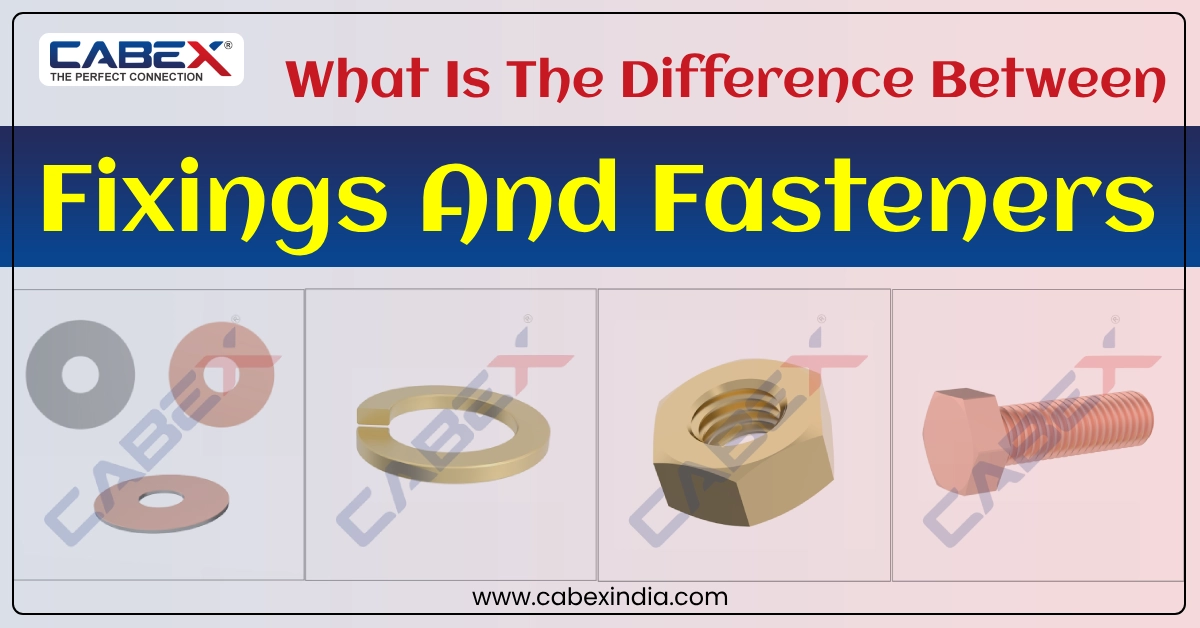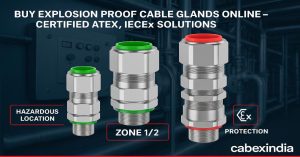In the world of construction, manufacturing, and DIY projects, precision is everything. Have you ever seen structures completed with tiles but tiles falling or wobbling after some time? Fixings and Fasteners provide stability solutions. Although these hold stuff together, their job descriptions are not at all the same. Fasteners are screws and bolts that join together materials, allowing for easy assembly and disassembly. However, fixings hold things to surfaces so that they cannot come free without tools and may need a wall plug or the equivalent. Are you fastening things or truly fixing them? Let’s uncover the answer!
What are Fasteners?
Fasteners are crucial hardware components used to join materials in construction. They create detachable joints without destroying the original object. Fasteners serve different applications, stabilizing steel frames, attaching concrete and wood, and performing mechanical systems for durable operations. Their functional strength allows them to maintain building integrity while being used in construction and industrial assembly operations.
What are Fixing devices?
These are devices used to attach, secure, or hold the stuff. They include products like anchors, clips, adhesives, and different types of tapes. Anchors are typically used to attach fixtures to walls or similar surfaces, while several adhesives bond different materials. There are thousands of fixing products available, from lightweight applications to heavy-duty structural applications.
Types of Fixings and Fasteners
- Screws are standard Fixings and Fasteners because they possess helically threaded shafts that receive power from screwdriver drills for tightening. Due to their powerful holding strength, screws function well for metal work, woodworking applications, and plastic assembly. The three major screw types comprise wood screws with wide threads for use in lumber, machine screws to ensure precise attachment, and self-tapping screws that make their own metal and plastic threads.
- Bolts operate in a manner analogous to screws because they measure larger in diameter. The installation of bolts requires pre-existing holes in the material. The high load resistance properties of bolts make them necessary for heavy machinery and automotive use. Various bolt types exist for their specific applications, such as steel framework use of hex bolts alongside carriage bolts for wooden joints and concrete anchors.
- Bolts need nuts to achieve stable, rigid connections through their built-in threading along the inside. The nut varieties consist of generic hex nuts, which serve basic fastening needs, wing nuts that enhance manual tightness, and lock nuts that are purpose-built for resisting vibrations. Construction sites, industrial equipment, and mechanical systems depend on these components. The combination of steel and brass, along with aluminium materials, increases nut strength.
- Flat disc washers serve as connectors that prevent a bolt or nut from touching the material surface. Washers spread surface pressure, decrease interface friction, and prevent the components from working loose. Flat washers provide balanced pressure distribution, spring washers offer tension resistance, and lock washers enhance secure grip.
- Threaded rods are long Fixings and Fasteners with continuous threading along their length. The absence of a head allows threaded rods to serve in construction, plumbing, and electrical work when accurate dimensional changes are necessary.
What is the difference between Fixings and Fasteners?
| Fixings | Fasteners |
| Secure objects to surfaces such as walls, floors, roofs, and doors, often permanently. | Hold two or more pieces of the same discrete material on a smaller or lighter scale. |
| Attach items to an object with a larger or permanent structure. providing security and support. | Join materials together but may allow for movement or disassembly. |
| Shelving plugs with screws for shelf mounting, expansion bolts to secure steel beams, concrete anchors for affixing heavy structures, and nails for attaching wooden panels to walls. | Different industrial fasteners assemble bolts and nuts with metal sheet rivets and door hinges that combine movement capabilities with staples for attaching insulation boards. |
| Fixings fasten materials to stationary surfaces such as brickwork, concrete, timber, and framework metal. | The use of fasteners in woodworking, metalworking, and mechanical assemblies includes coach bolts for timber connections besides spring clips and self-tapping screws, which serve metal sheet fastening needs. |
| Usually permanent or semi-permanent with application that requires tools to install (drills, hammers, screws, glue, etc.). | Most fastened components can be assembled or disassembled without difficulty by using wrenches, screwdrivers, and pliers. |
Industries that use Fixings and Fasteners
1. Building and Construction
Fixings and fasteners are essential connectors that stabilize beams and frames with roofing structures while uniting beams with drywall panels in domestic, business, and manufacturing buildings. The attachment of steel frameworks to concrete foundations through anchor bolts occurs alongside wood component connections, which use nails and screws.
2. Furniture Assembly
Tables with chairs, cabinets, and wardrobes become assembled through the application of wood screws, cam locks, and dowels. The knock-down fasteners present in modular furniture contribute toward the simple recovery and rebuilding of its components.
3. Automotive Industry
Engine parts, chassis components, exhaust systems, and suspension systems receive mechanical support from bolts, nuts, rivets, and clips. The application of thread-locking adhesives prevents parts from shaking loose because of vibrational movement.
4. Plumbing and Piping Systems
Water supply and drainage systems that include PVC, copper, and steel pipes utilize threaded rod compression fittings and pipe clamps for installation support. Expansion anchors secure the pipes and give the concrete wall firm support.
5. Electrical and Mechanical Installations
The electrical wiring can be secured through the utilization of cable clips together with conduit fasteners and wire anchors. Screws with locking pins play a vital role in securing rotating machine parts that are present in motors and gear assemblies, and HVAC systems.
How do you select the right Fixings and Fasteners?
1. Material Compatibility
The selected fastener needs to be compatible with both materials for effective joining. Stainless steel fasteners are used in outdoor applications because they maintain their resistance against corrosion.
2. Size and length
The selection of the appropriate fastener size is an essential requirement. Fasteners that are either too short or too long will fail to provide proper support during joining, weakening joints.
3. Load requirements
When dealing with heavy loads, reinforced anchors and high-tensile bolts are necessary to ensure the stability and longevity of material connections
4. Environmental Conditions
Three elements, including moisture levels and heat exposure, along with chemical substances, have a direct impact on material life expectancy. The protective coatings on galvanized or coated fasteners stop corrosion in severe environmental conditions.
Conclusion
At Cabex India, we provide high-quality Fixings and Fasteners, ensuring durability and reliability, corrosion resistance, and long-lasting performance in every project. From head set screws and wood screws to bolts and nuts and washers, our products are engineered to hold things together—literally!In addition to Fixings and Fasteners, we stock Industrial Cable Lands, along with Industrial Cable Lands Accessories and Hazardous Area Cable Lands, which come with Hazardous Area Cable Lands Accessories for demanding safety applications. No matter what your project is, Cabex India is there for strength that stays.
FAQ’s
1. What is the difference between a screw and a bolt?
Screws have threads that grip right into the material; a bolt needs a nut to fasten items together.
2. When should I use washers?
In high-stress applications, washers are used to distribute pressure evenly and avoid damaging surfaces.
3. Can I use bolts without nuts?
No bolts required nuts to hold things in place, unlike screws that can hold things in place directly.
4. What material is best for fasteners outdoors?
Stainless steel is ideal due to its corrosion resistance.
5. What is the difference between galvanized and stainless steel fasteners?
While the zinc coating helps brass fasteners resist rust, stainless steel fasteners offer enhanced durability and natural resistance against corrosion.
Follow us:- Facebook, Instagram
You May Also Like: Comprehensive Cable Gland Size Chart for Your Needs , How to Identify Genuine Quality Brass Cable Glands Easily





